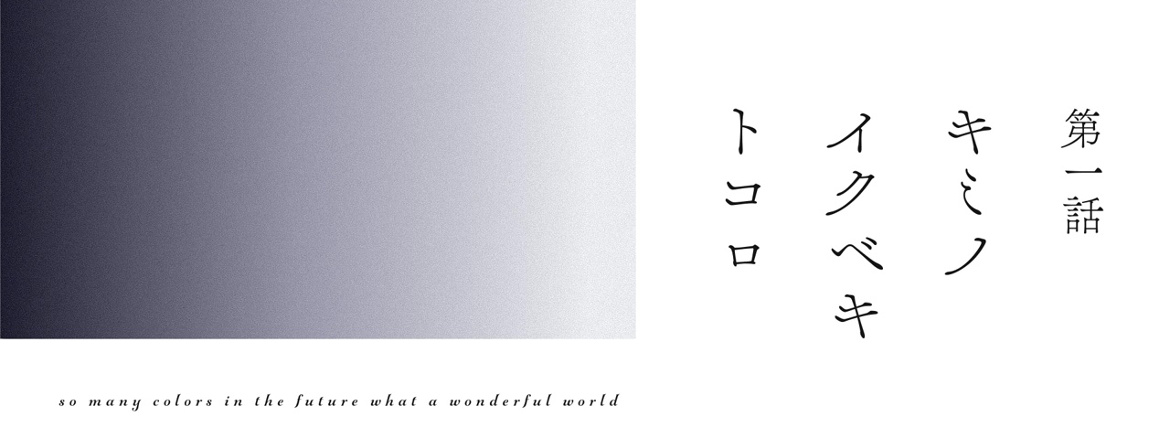
“I wonder when it started. When did I stop enjoying fireworks? The fireworks I saw with my mother… red, blue, yellow, green, orange… they were all so beautiful.”
Well, at least you’re pretty. Iroduku Sekai no Ashita kara, or Iroduku: The World in Colors as its English title goes, is the newest series from P.A. Works. I’m not necessarily a fan of P.A. Works in general. That isn’t to say that I have some stigma against them, or that I don’t like the work I’ve seen, but, aside from Angel Beats!, most of the titles they’ve released haven’t stuck with me. I think it would be fair to say I’ll find Iroduku to be a largely annoying series. If I were to judge this series based upon the first episode alone, I’d say that it looks as if it will consist primarily of pretentious musings, peculiar interactions and fish-out-of-water high jinks. My patience for this show waned quickly, and it never fully recovered. I will at least acknowledge it got better as it went on, but Iroduku never succeeded at getting its premise to click with me.

The story of Iroduku takes place in a world where magic exists, but, for the most part, things seem to go on as they do in the real world. Our main character is Tsukishiro Hitomi, a colorblind mage who evidently wasn’t always colorblind, and has come to hate magic. One evening during a festival, her grandmother comes to her and reveals that she has prepared time travel magic to take Hitomi back to 2018. She doesn’t provide any firm reasoning for doing this, but just sends Hitomi back in time with only a moment’s notice. From there, we’re treated to an… odd scene involving a train ride back through time. It’s a creative metaphor, I suppose, but the show had already lost me with Hitomi’s musings on why she didn’t care for fireworks anymore, so I wasn’t in the proper mindset to appreciate what creativity the show did have to offer. Hitomi materializes in the past in a boy’s bedroom, and works to evade the unaware student. From there it’s mostly her stumbling through her town, being depressed and eventually working her way over to her home where she meets up with her great-grandmother and great-great-grandmother. Hitomi is, frankly, an uninteresting and morose character. If I were to wrap her up in a single sentence it would be, “I’m sad and I don’t see color.” That’s all this first episode really provides. It picks up towards the end as she encounters members of her family, and plays off of them a little bit, but she remains the least interesting part of this show.

The traditional animation in this series is really good, but the integrated CG isn’t to the same standard. It isn’t extremely prominent, but it rears its less-than-attractive head during certain shots of pedestrians and when Hitomi’s grandmother sends her back in time, and it sticks out like a sore thumb. The CG pedestrians felt particularly weird, as they seem to have an awkward weaving gait. I think the production staff were trying to make them look less robotic, but it didn’t work. It doesn’t help that, earlier this week, Seishun Buta Yarou did a much better job by blending in traditional animation into its crowds in order to obscure the CG shortcuts. Still, P.A. Works made a very beautiful series with Iroduku, and the color palette is rich and borders on movie quality at points. Unfortunately, the art was the only aspect of the show that clicked with me. This first episode isn’t terrible, but it features sloppy world building and characterization, and left me thoroughly uninterested in the direction it will take moving forward.
Before I wrap up, a few Notes and Nitpicks:
- Magic is evidently commonplace in this show, but it doesn’t seem prominently featured. Until Hitomi sought out the ‘magic shop,’ I wasn’t even certain that the average person knew about magic in the 2018 world.
- You know. I don’t care about fireworks either, but it’s a pretty lame thing to wax philosophical about. They’re bright flashes. If you’ve seen one, you’ve practically seen them all.
- Whenever the camera switches to Hitomi’s perspective the palate changes to grayscale. It’s a decent reminder of the fact that she’s colorblind, but the show does it annoyingly often.




Add comment